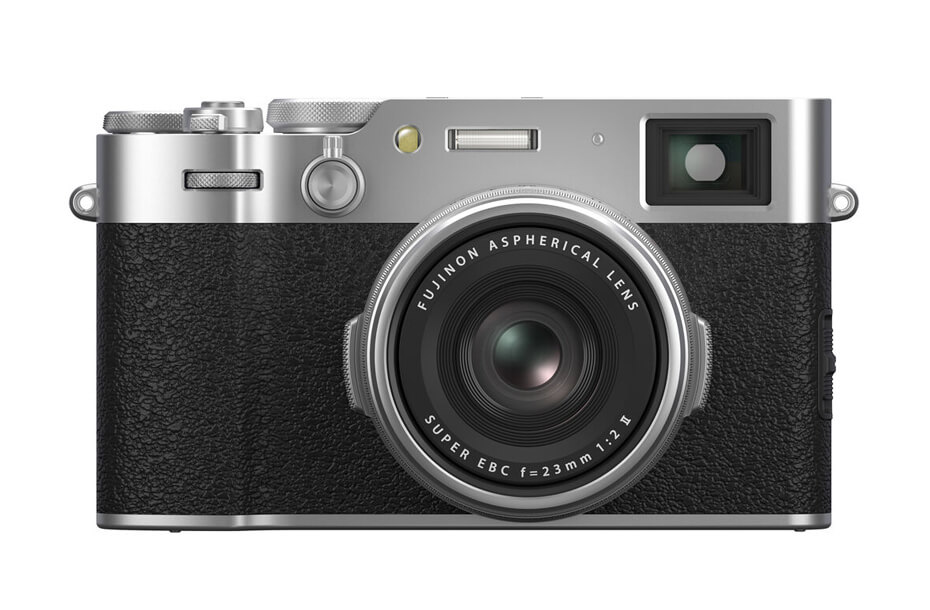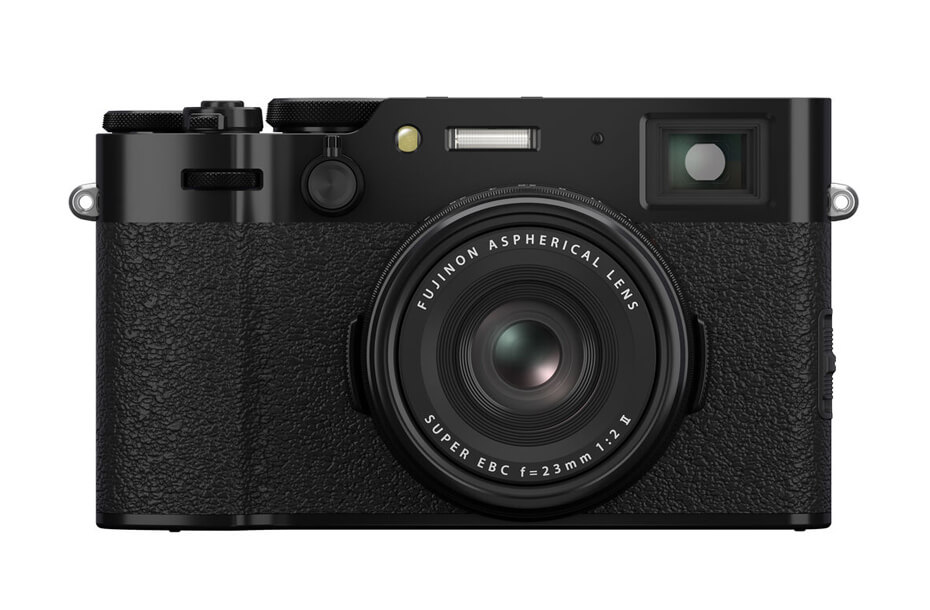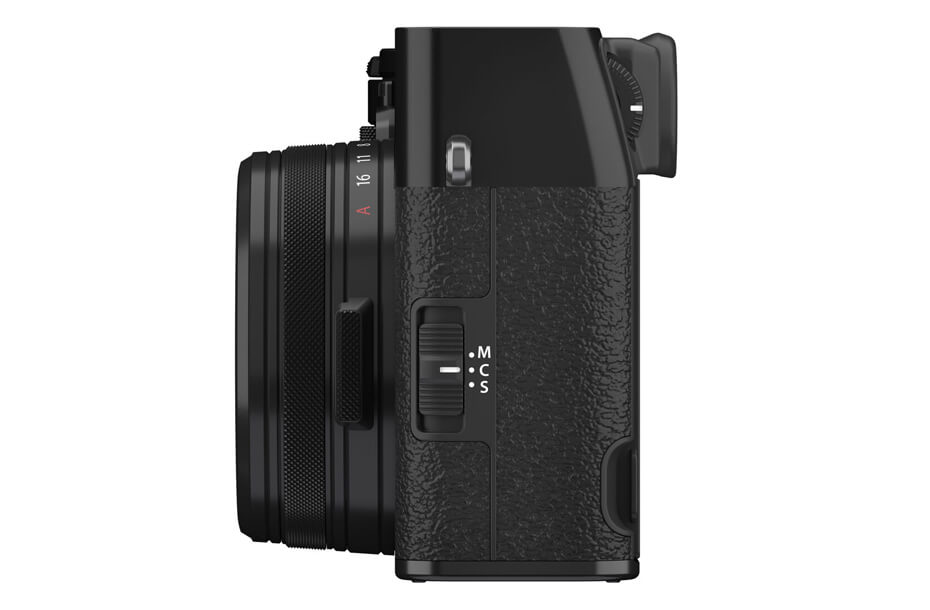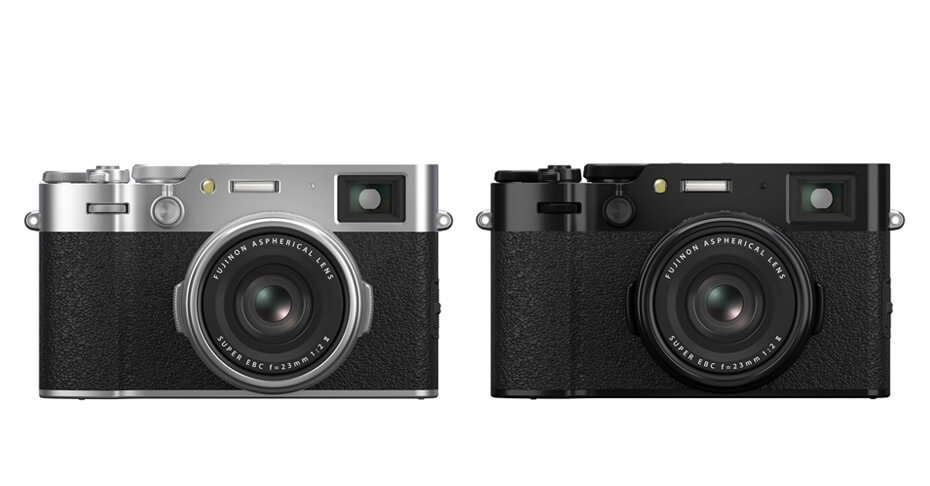The new Fujifilm X100VI is the 6th generation of X100 series cameras.
The older X100V is nearly impossible to find due to large demand.
Both Fujifilm cameras use the same 23mm lens and look nearly identical, so let’s see what are the biggest differences between them.
At the end of the day, cameras are just tools that help us capture moments. If the new features don’t help you with that, it doesn’t matter which cameras is newer.

Why choose the Fujifilm X100VI:
- 40 vs 26 megapixels which leaves more room for cropping or printing large
- Built-in Image Stabilization helps up to 6 stops (great for low-light)
- Improved Auto Focus with subject recognition for human faces, animals, birds and vehicles
- 6.2K at 30p or 4K at 60p video recording options
- Pre-shot mode can save frames before you snap a picture
The new Fujifilm X100VI is not an enormous upgrade from the already good X100V.
The built-in stabilization is an excellent feature that makes the camera much more night time friendly. If you do lots of party, event or low-light photography, the difference is huge.
Megapixels wise, 40MP vs 26MP is visible when cropping a lot. With a fixed 23mm lens, many people crop to get closer to their subject. With 14 more megapixels, your images will contain a bit more detail.
Improved video and auto focusing are nice, but the camera also costs $300 more. This is mainly a JPEG/compact photography camera and most people don’t use it for recording videos.
In my opinion, I wouldn’t recommend you to upgrade from the X100V unless you do lots of low-light photography and need stabilization. If you don’t own the X100V then this newer model is super tempting if you find the new features align with your photo needs.

Why choose the Fujifilm X100V:
- Around $300 cheaper body if you can even find a used/new one
- Image quality is 99% comparable to the X100V and they use the same lens
Now for more a more detailed comparison between the two Fuji’s.
Image Quality

- Fujifilm X100VI: 40.2MP APS-C sensor
- Fujifilm X100V: 26.1MP APS-C sensor
The new Fujifilm X100VI has a 40.2 megapixel sensor. The older model has 26.1MP and while that’s almost half less, it doesn’t necessarily relate to better or worse image quality.
We’ve seen this 40MP sensor in more advanced models such as Fujifilm X-T5 and X-H2, and their image quality is excellent. The extra resolution helps a lot when cropping and printing big, but even 26MP is more than enough for most cases.
The native ISO range is now between 125 -12,800, making it 1/3rd of a stop brighter than 160 – 12,800 on the X100V. The extended range has also seen a small increase, with the lowest ISO being 64 instead of 80.
Both cameras max out at ISO 51,200, but that’s something I don’t recommend you to touch at all.
While more pixels usually results in more noise, it’s great to see that their noise performance is more or less the same with both cameras. You can see how the image quality compares at Dpreview.
Body Stabilization
- Fujifilm X100VI: 5-axis stabilization (6 stops)
- Fujifilm X100V: No stabilization
Finally, the Fujifilm X100VI features a 5-axis image stabilization that helps up to 6 stops.
This makes the camera much better for low-light photography compared to any other X100 model. Birthdays, restaurants, concerts and night time photography are much easier now.
6 stops stabilization means you can literally use a 1/15 shutter speed instead of 1/500 and get a blur-free image. If your subject is moving it won’t help, but now the camera is better suited for food photography and all those indoor, badly lit scenes.
Both cameras feature a built-in ND filter up to 4 stops. It works for photography and video, so if you want that cinematic look you don’t have to buy any external filters.
Film Simulations
- Fujifilm X100VI: 20 film simulations
- Fujifilm X100V: 17 film simulations
The X100VI features all 17 film simulations found in the X100V, but gains 3 new ones. Reala Ace, Nostalgic Negative and Eterna Bleach Bypass.
Since the biggest appeal of the X100 series is their JPEG film simulations, it can’t hurt to have as many as possible.
Video Features
- Fujifilm X100VI: 6.2K at 30p (1.23x crop) or 4K at 60p (1.14x crop)
- Fujifilm X100V: 4K at 30p
The X100 series is not really a camera you buy for videos, but the Fujifilm X100VI gets a lot of improvement in this department.
First, it can record 6.2K videos at 30p and a 1.23x crop. This means the field of view will be equivalent to a 28mm lens. It can also do 4K at 60p with a 1.14x crop or 4K 30p without any crop.
If you decide to record in Full HD, the X100VI allows you to shoot up to 240fps.
Videos are now 10-bit compared to 8-bit, giving you a bit more freedom when color grading your films. You can also choose to record in F-Log2 profile to maximize your dynamic range.
One of the major improvements for video is the built-in stabilization as well as faster auto focusing. It’s much better at locking onto your subject’s eyes/face compared to the X100V.
Speed & Buffer

The Fujifilm X100V uses the new X-Processor 5 which is twice as fast as the X-Processor 4 found in X100V.
While the older model wasn’t slow, everything feels a little bit quicker now. From simple menu operations and turning it on, to more complex processes such as buffer, file writing, noise reduction etc.
Memory card wise, the X100VI still supports UHS-I SD memory cards so nothing has changed here. That’s a bit of a disappointment, especially with bigger photo and video files. UHS-I can handle all internal processes just fine, but for file transferring it would simply be quicker.
If you’re interested in how many 40MP RAW or JPEG files you can store on a memory card you can use our Memory Card Storage Calculator.
Buffer sizes have improved and you can capture 117 JPEG’s compared to 79 on the X100V. For RAW files, you can capture 52 compared to 17 on the X100V.
The USB connectivity is now USB 3.2 Gen which is twice as fast as the X100V for transferring files through the cable.
Auto Focus
- Fujifilm X100VI: 425 AF Points (+Subject Recognition)
- Fujifilm X100V: 425 AF Points
As with many latest cameras, the Fujifilm X100VI receives an improved auto focus mechanism that was trained with machine-learning algorithms.
It can recognize faces, birds, animals and vehicles and will lock focus much quicker than the X100V.
For portraits and pets, this is a much welcome feature. Not only is it more accurate, it simply takes less time to recognize your subject regardless of how they move.
Body Size & Battery

- Fujifilm X100VI: 450 shots battery life
- Fujifilm X100V: 420 shots battery life
Both cameras look 99% identical.
The Fujifilm X100VI is 40g heavier and 2mm thicker. You won’t feel the difference.
Capacity wise, it uses the same NP-W126S battery and has a similar shot count. However, despite all the new features it manages to to last up to 450 shots compared to 420 on the X100V.
Other Features

Both cameras have a maximum shutter speed of 1/4000, but in electronic mode the new X100VI can shoot up to 1/180,000.
That’s blazing fast, and even the 1/32,000 on the X100V was a lot. This is purely for those sunny, f/1.0, high ISO situations.
The X100VI is also the first Fujifilm camera to support camera-to-cloud (c-2-c) through the built-in Wi-Fi. You simply connect your camera to the smartphone and upload your photos/videos to Adobe’s Frame.io.
Besides JPEG and RAW, you can now shoot in HEIF format.
There’s a Pre-shot mode that allows you to save a couple of frames before pressing the shutter button. Perfect for candid moments and street photography!
Conclusion
The new Fujifilm X100VI comes with a couple of features, but they may not justify the $300 higher price tag to everyone.
Built-in stabilization, better auto focus and 6.2K video recording are its biggest selling points. They make the X100V much more usable in different scenarios, especially low-light and portrait photography.
It’s nearly impossible to find a new X100V, so prices for used ones are probably going to drop in the following months.
You can see the latest price for the Fujifilm X100VI here.
You can see the latest price for the Fujifilm X100V here.


